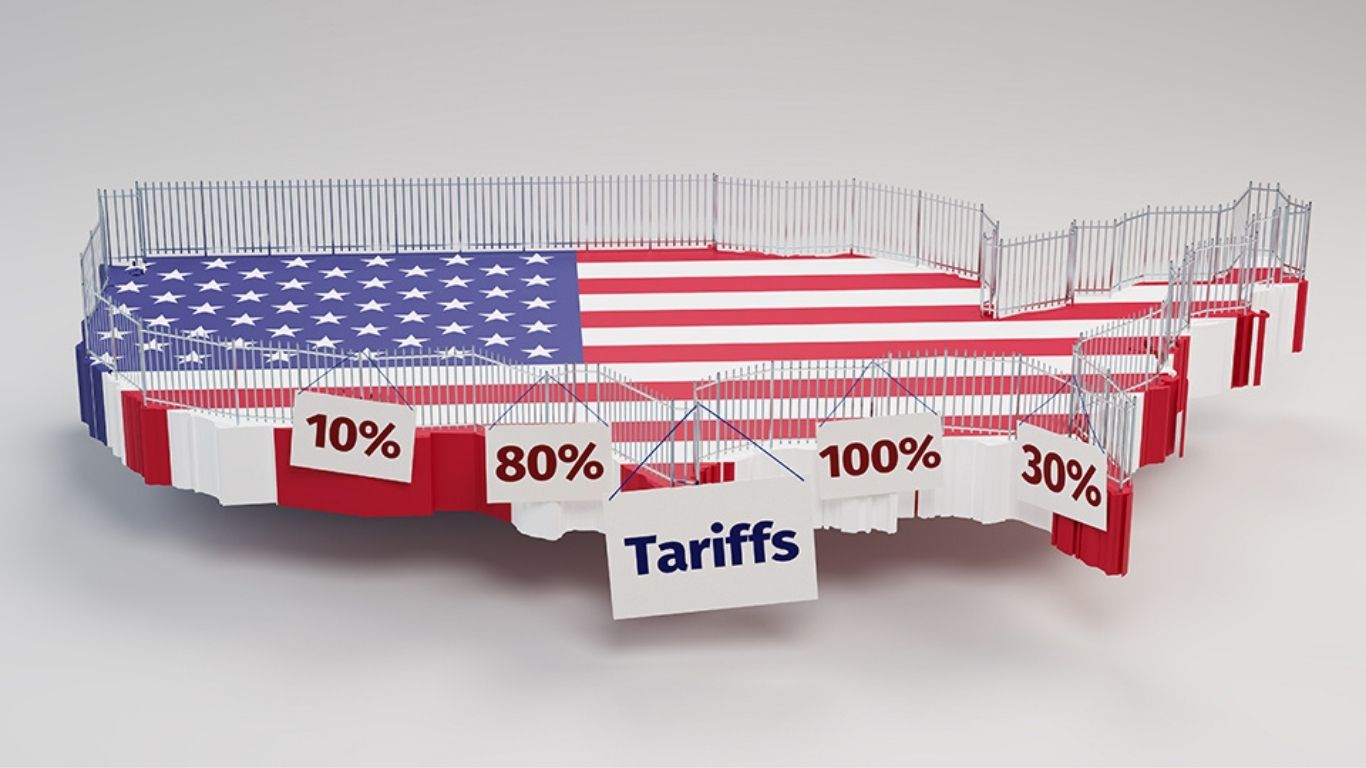April 2, 2025, has been dubbed “Liberation Day” by President Donald Trump. Unlike historical liberation days, which commemorate freedom from oppression, this one is centered on economic nationalism. Trump has vowed to introduce a comprehensive set of tariffs to restructure global trade in favor of the United States. The objective is to curb trade deficits, incentivize domestic manufacturing, and reduce reliance on foreign supply chains. However, the ramifications of these policies remain uncertain will they reinvigorate American industry, or will they trigger a costly global trade war?
The Main Reason Behind Trump’s Decision
Trump’s tariff policy is driven by his long-standing belief that the U.S. has been disadvantaged in international trade due to unfair foreign practices. The trade deficit $131 billion as of January 2025 has been a persistent concern, and Trump sees tariffs as a tool to correct what he perceives as systemic imbalances. His administration argues that foreign nations impose high tariffs, restrictive quotas, and value-added taxes (VATs) on U.S. exports, while benefiting from relatively open access to the American market. By implementing reciprocal tariffs, Trump seeks to:
Address Trade Imbalances: By taxing foreign imports, he aims to reduce the flow of capital out of the U.S. and encourage domestic spending.
Revitalize Domestic Manufacturing: Higher import costs could push companies to shift production back to the U.S., creating jobs and strengthening industrial capacity.
Enhance Economic Security: Reducing reliance on foreign supply chains, particularly from China, is framed as a national security priority.
Increase Federal Revenue: Tariffs generate tax income, which could be used to offset federal spending or fund tax cuts elsewhere.
However, economic experts warn that broad tariff applications tend to have significant unintended consequences, including higher consumer prices, retaliatory trade measures from other nations, and disruptions to global supply chains.
Trump’s Tariff Strategy: Economic Power Move or Price Hike Disaster?
Since his first term (2017–2021), Trump has positioned tariffs as a means to force trade partners into more favorable negotiations. His administration has implemented tariffs on key sectors, including:
Steel and Aluminum: Meant to protect U.S. metal producers but criticized for raising costs for domestic manufacturers.
Chinese Goods: Part of an ongoing economic battle aimed at countering China’s trade practices.
Venezuelan Oil: Intended to apply economic pressure on the Maduro government while favoring domestic energy producers.
Automobiles and Auto Parts (Effective April 3, 2025): This could significantly impact the North American auto industry, disrupting supply chains that rely on Canadian and Mexican components.
While Trump contends that these measures will create leverage for better trade deals, many economists caution that broad tariffs often lead to inflation, increased business costs, and market volatility.
The Evolution of Trump’s ‘Liberation Day’
The term “Liberation Day” has undergone a transformation under Trump’s leadership. Traditionally associated with historical victories, Trump has adapted the phrase to frame his economic policies as a form of financial and industrial independence.
February 2024: Declared Election Day (Nov. 5) as a “Liberation Day” from globalist economic policies.
January 2025: Marked his inauguration as a second “Liberation Day,” promising economic reform.
March 2025: Stated that April 2 would be the true “economic liberation” through the implementation of tariffs.
What to Expect on April 2
With April 2 fast approaching, uncertainty looms over the full scope of Trump’s tariff strategy. While several tariffs are already in place, additional measures are expected, though details remain unclear. The most pressing concern is the impact of new auto tariffs, which could raise vehicle prices and disrupt supply chains.
Trump’s administration has sent mixed signals regarding potential leniency, suggesting negotiations with allies like Canada may still be on the table. However, reports indicate Trump is urging his team to apply tariffs aggressively, reinforcing his stance on economic protectionism.
Will Tariffs Work? The Economic Debate
Trump argues that the U.S. has been losing wealth to unfair trade deals, but critics see a different reality:
Pro-Tariff Argument: The U.S. needs stronger manufacturing to reduce reliance on foreign nations, protect jobs, and boost economic security. The United Auto Workers (UAW) union has voiced partial support, believing tariffs could lead to more domestic production.
Anti-Tariff Argument: Global supply chains mean that tariffs often increase costs, not jobs. Higher consumer prices, retaliatory trade measures, and disrupted business operations could trigger a recession instead of economic growth.
The Future and Impact of Trump’s ‘Liberation Day’
The long-term consequences of Trump’s trade policies depend on multiple factors, including global economic responses, domestic business adaptability, and consumer sentiment. Potential outcomes include:
Positive Scenario: If tariffs successfully pressure foreign governments into reducing trade barriers, the U.S. could see an increase in domestic production and better global trade terms. This could lead to job growth, higher wages, and a stronger industrial base.
Negative Scenario: If other countries retaliate with their own tariffs, the U.S. could face higher import costs, reduced exports, and potential supply shortages. A prolonged trade war could slow economic growth and contribute to inflation.
Political Implications: The success or failure of these policies could significantly influence Trump’s political standing. If they lead to job creation and economic expansion, they may bolster his approval ratings. Conversely, if they contribute to recessionary pressures, public backlash could be severe, impacting the 2026 midterm elections.
The Verdict: Trump’s Biggest Economic Gamble?
Trump’s ‘Liberation Day’ represents one of the boldest economic moves of his presidency. If successful, it could redefine global trade dynamics and bolster American industry. However, if tariffs lead to inflation, economic contraction, and stock market declines, the strategy may be remembered as a costly miscalculation.
As the world awaits the full details of Trump’s tariff plan, the stakes remain high. Will April 2 mark an economic renaissance or the beginning of a trade war that harms American consumers and businesses alike? Time will tell.




